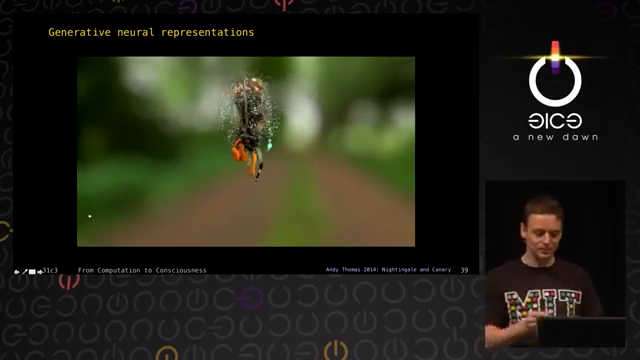From Computation to Consciousness
Table of Contents
- 1. Intro - Fundamental Questions
- 2. How does the mind experience the universe?
- 3. Neural Organization
- 4. Mental Representations
- 4.1. Types of Metal Representation
- 4.2. Perception & Ideas
- 4.3. Attetntional Awareness - Cortex directs attention on the mental representations
- 4.4. Memory access has similarities to perception
- 4.5. Sensory perception is interface to the universe
- 4.6. During dreams the sensory perception is reduced to random noise
- 4.7. Is Self necessary for consciousness?
- 5. What is Consciousness - Computation?
- 5.1. Is it Mirror test?
- 5.2. Awareness of What happens in our mind - John Locke
- 5.3. Emergent over the integration of information in our brain - Giulio Tononi
- 5.4. Consciousness is a Set of functions - Suite of mechanism necessary - Joscha
- 5.5. So there can be different states of consciouness
- 5.6. And Mind is Information Processing Machine
- 6. How can we explain the regularity in the pattern the universe produces?
- 6.1. Universe needs to compute too - Computation is necessary and sufficient to produce regularity and pattern
- 6.2. Alternative Definitions of Computation
- 6.3. Computationalist Monism - Mind is inside universe which runs on computational substrate
- 6.4. It doesn't matter to make any distinction between reality and simulation
- 6.5. So there are no truths - Concepts, Reference and Meaning
- 6.6. Instead there are Suitable Encodings - they replace meaning & truth and are more better
- 6.7. If Nothing is true, how can we say there is no truth? - We don't, we say its the most suitable encoding 😂
- 7. Answers
- 8. QA
Notes from From Computation to Consciousness - 31c3 by Josch Bach
1. Intro - Fundamental Questions
After humans had solved how to get food, and how can we push back entropy to get warm and where can we find love. These questions remain:
- What is the nature of reality?
- What can we know?
- Who are we?
- What should we do?
2. How does the mind experience the universe?
2.1. Phenomena -> Noesis -> Noema : In Humans - Edmund Husserl
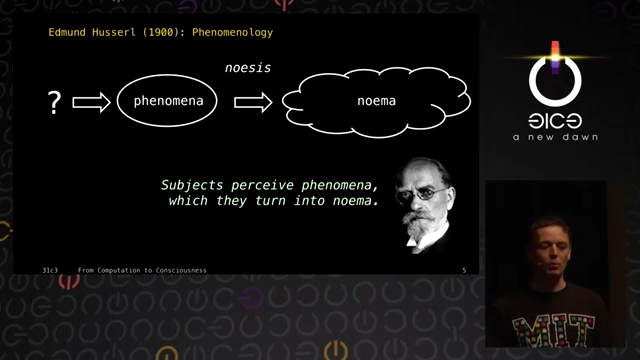
We get phenomena (appearances) (not reality) Our mind turns that into concepts called noema this process is called noesis
2.2. Bits -> Information Processing -> Model of World : In Robots
0:04:49
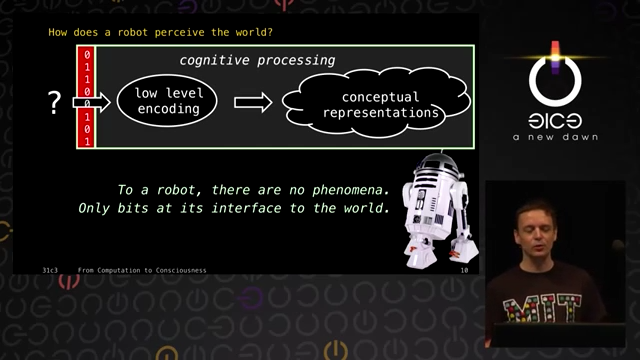
2.3. How do we percieve reality?
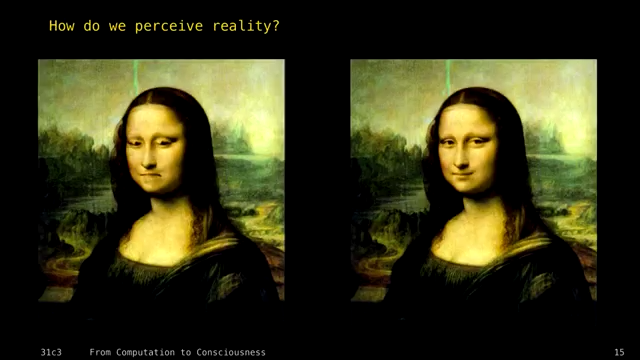 The eyes and mouth in the left is turned upside down, but you may not have recognized that immediately.
The eyes and mouth in the left is turned upside down, but you may not have recognized that immediately.
Maybe because We don't process faces as a whole rather we process the features of the faces independently and then we combined the representations of them in the face schema that we mentally scan.
3. Neural Organization
3.1. Visual cortex
3.1.1. Cortex - Mini Column - Primary unit of Neural Organization
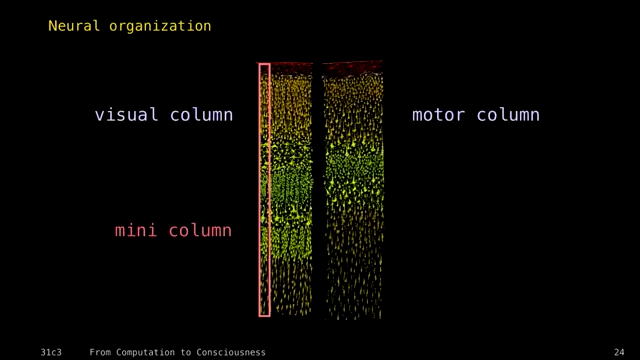
3.1.2. V1 - Orientation, Spatial frequency, Color
3.1.3. Primary Visual Area V1 project to V2 where movements are removed - stable visual map
3.1.4. V3 - Color & Motion direction
3.1.5. V4 - Simple Geometric Shapes
3.1.6. V5 - Object motino
3.1.7. V6 - Ego motion
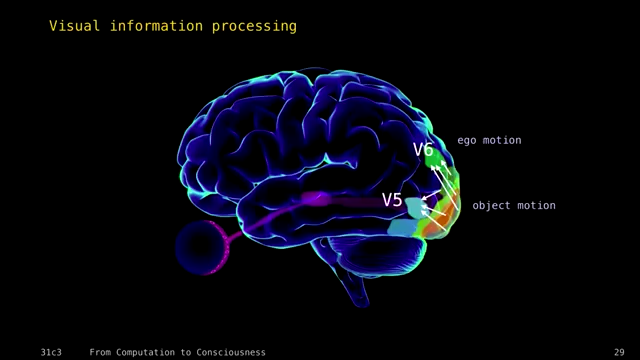 Processing part is now split up. One is where part (object motion) and another is which part (ego motion).
Processing part is now split up. One is where part (object motion) and another is which part (ego motion).
These part create object schemata, figure/ground (GEB talks about figure and ground for a while in the book), numerosity
3.2. Attentional Selection - Scanning of schemata
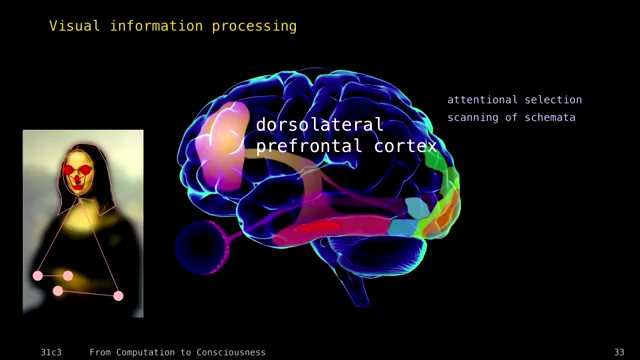
3.3. These kinds of theories can be converted to testable models
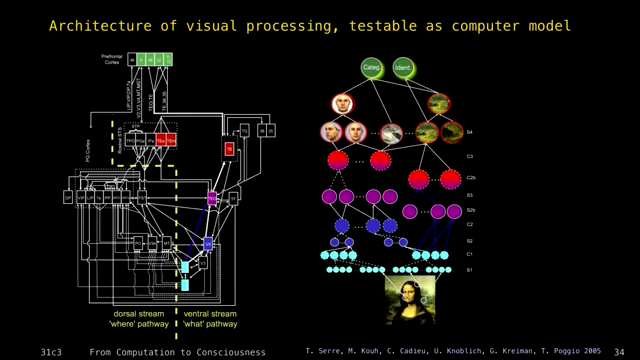
4. Mental Representations
4.1. Types of Metal Representation
4.1.1. Schematic / Compositional - Faces/Eyes/…
4.1.2. Associative / Non-compositional
4.1.3. Symbolic / Linguistic - Which we can express through language
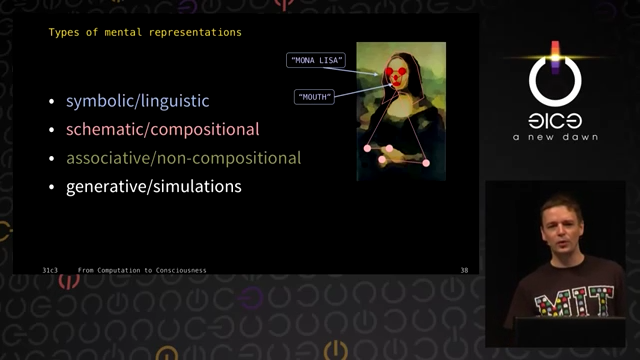
4.2. Perception & Ideas
4.2.1. Perceptual representation can be tagged as verfied - by sensory data
Brain takes it as real
4.2.2. Ideas are imaginary - in that they aren't verified by sensory data
4.3. Attetntional Awareness - Cortex directs attention on the mental representations
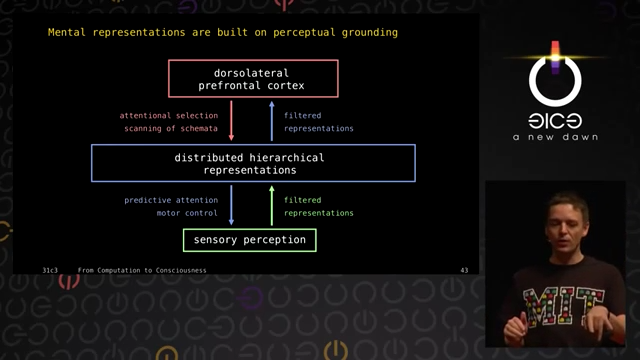
- Attention filtering
- predictive attention on sensory perception verifies the mental representation
4.4. Memory access has similarities to perception
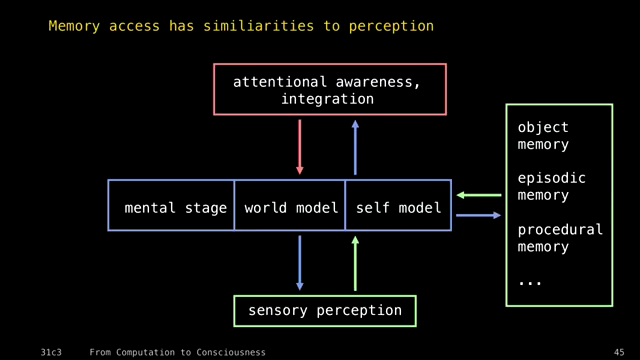
- Mental stage, self model and memory can't be verified by sensory perception
- but memory can be thought as perception: the mind asks give me some true abstractions and then the memory returns whats object/episodic/procedural memory
4.5. Sensory perception is interface to the universe
4.6. During dreams the sensory perception is reduced to random noise
4.7. Is Self necessary for consciousness?
4.7.1. Mediation can remove World Model & Self Model
If we do meditation we can remove the world model (i.e. mental representations of the templates with which see the world) and also if we go deep into meditation we can remove model of self
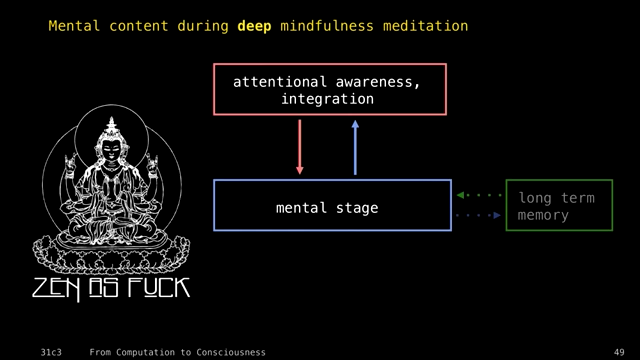
4.7.2. How can we be conscious without our self?
- because Self is not our mind, or our agency, but a representation
- Its a story that the mind tells itself
0:19:10 Will : the represenatation of decision (on any level of the mind) to reaise a motive to an intention
0:19:24 Free Will : a social notion that Will could have been influenced by discourse
5. What is Consciousness - Computation?
5.1. Is it Mirror test?
- Not necessary for consciousness
5.2. Awareness of What happens in our mind - John Locke
- 0:21:35 But we are not very aware of what happens in our mind
- Continuity if fake
5.3. Emergent over the integration of information in our brain - Giulio Tononi
If represenatation are coherently integrated we are fully conscious. Its measured by \(\phi\)
0:22:56 Drawback: We can make computers with high \(\phi\) but they won't be conscious
5.3.1. So, Coherent repesentations are necessary but not sufficient
5.4. Consciousness is a Set of functions - Suite of mechanism necessary - Joscha
Consciousness as a set of cognitive functions
- local perceptual space
- access to perceptual content
- current world model
- directed atention (inwards/outwards,wide/foused)
- access and follow concepts, episodes, simulations
- manipulate and create concepts, episodes, simuations
- mental stage
5.5. So there can be different states of consciouness
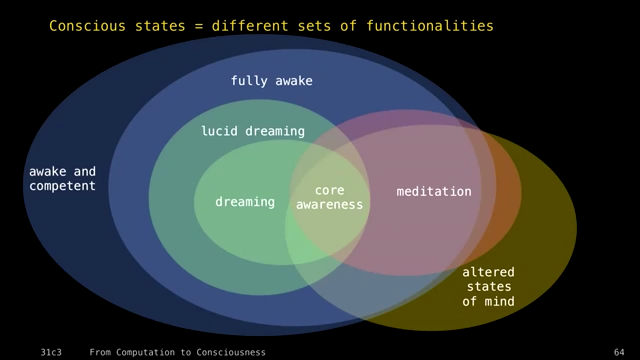
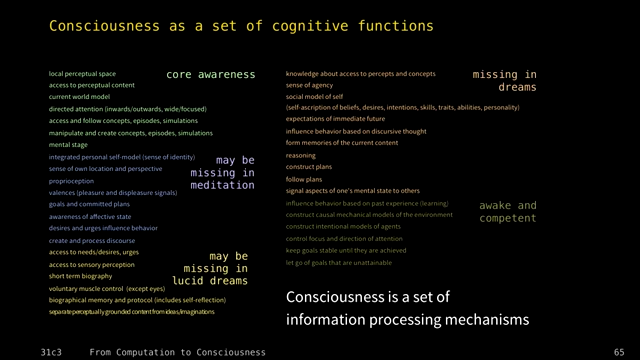
5.5.1. Similar to love
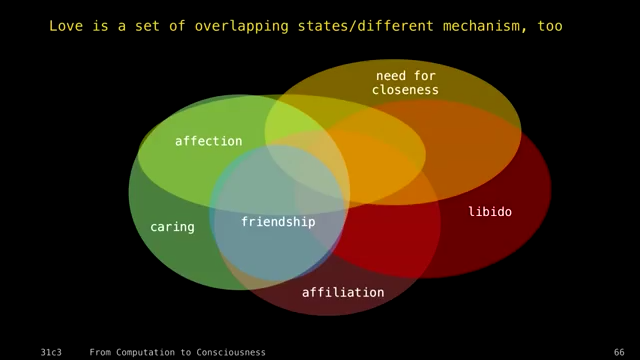
5.6. And Mind is Information Processing Machine
6. How can we explain the regularity in the pattern the universe produces?
6.1. Universe needs to compute too - Computation is necessary and sufficient to produce regularity and pattern
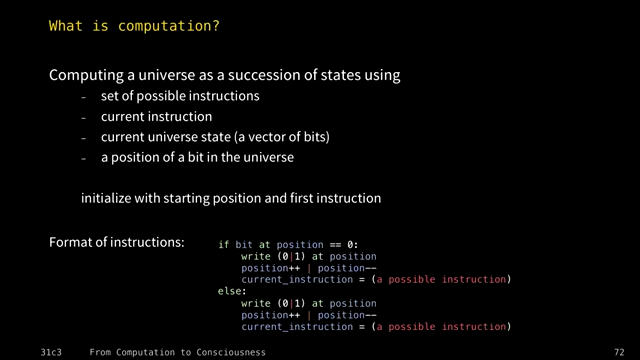
6.2. Alternative Definitions of Computation
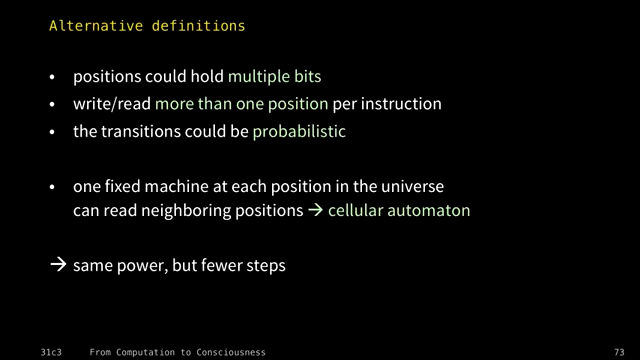 Cellular Automaton = One fixed machine at each position in the universe can read neighboring positions
Cellular Automaton = One fixed machine at each position in the universe can read neighboring positions
6.3. Computationalist Monism - Mind is inside universe which runs on computational substrate
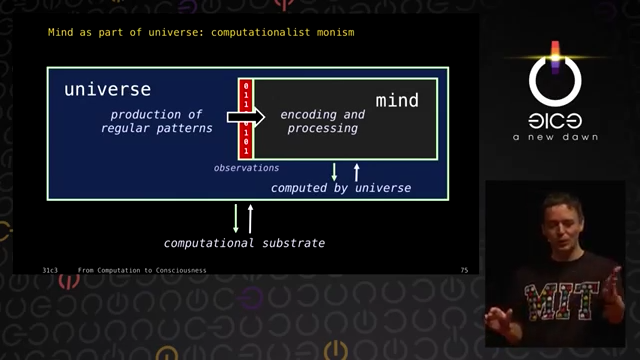
6.3.1. Physicalist Computationalist Monism
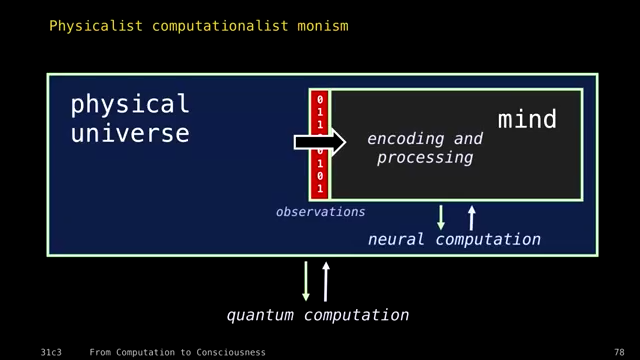 Mind is like a computer inside minecraft
Mind is like a computer inside minecraft
6.4. It doesn't matter to make any distinction between reality and simulation
6.5. So there are no truths - Concepts, Reference and Meaning
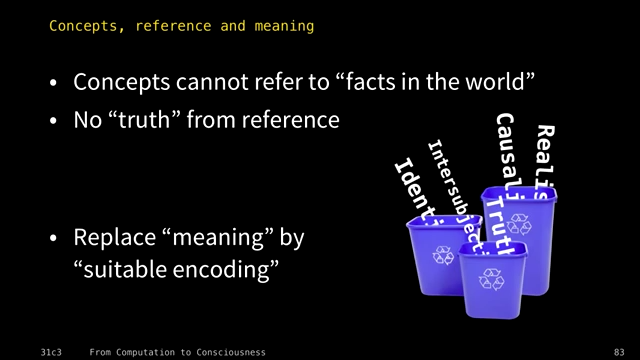
6.6. Instead there are Suitable Encodings - they replace meaning & truth and are more better
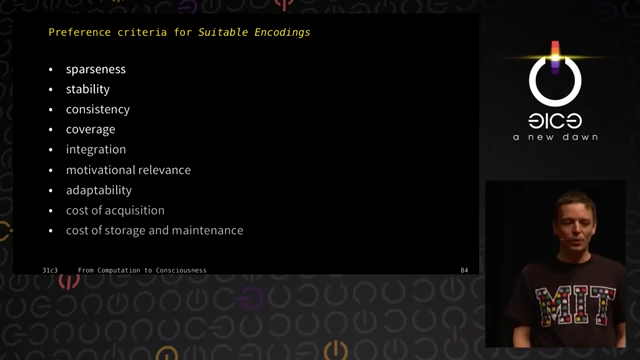
6.7. If Nothing is true, how can we say there is no truth? - We don't, we say its the most suitable encoding 😂
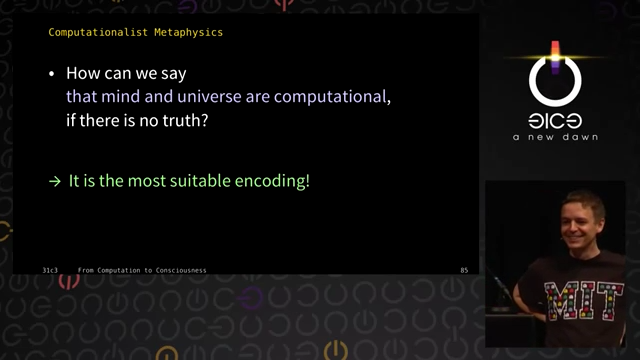
7. Answers
7.1. What is Nature of Reality?
7.1.1. The universe provides patterns at our systemic Interface
7.1.2. Computation is necessary and sufficient
7.2. What can we know?
7.2.1. Information - which can be encoded to percepts, concepts, simulations, world view, culture, …
7.3. Who are we? - What are minds?
7.3.1. We are computation systems
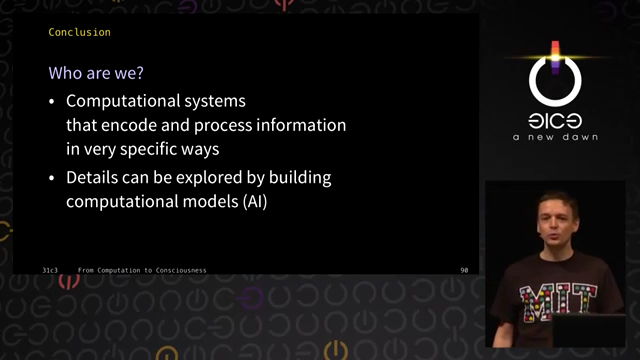
7.3.2. To find more about mind we need to build mind
7.4. What should we do?
7.4.1. Pushback entropy !! 😂
7.4.2. Love!!
7.4.3. Build Artificial Intelligence!! :)
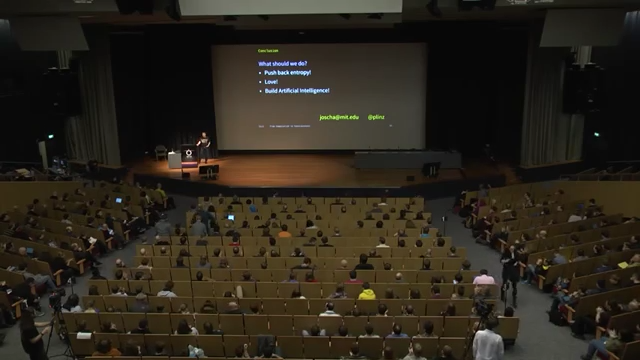
8. QA
8.1. Is it our current culture/thinking paradigm To think mind as a information processing
Because hundred years ago people thought they had figured out what humans were made up of! – Pipes, and valves,…
Not! Information processing a general idea that is necessary for the model of mind. People had a mechnical view of mind beacuse even 50 years ago we didn't have theory/mechanism of computation. This mechanism is only incidental, i.e. it got discovered, because world is computational.
8.2. Computation is true subset of Mathematics
8.3. As an engineer I accept everything!!
8.4. Implication of AI?
Organizational intelligence are there now. But they are not efficient because they have to borrow human intelligence and they are not fully conscious yet.
